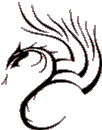POINT: UB-1 (URINARY BLADDER-1)
| English: | Bright Eyes |
| Also Known As: | Eye Brightness Eye's Clarity Iris Bright Clear Vision |
- 0.1 cun medial and superior to the inner canthus of the eye, near the medial border of the orbit.
- 0.1 cun above the inner canthus of the eye. (Locate with the eyes closed).
- Located in the slight depression 0.1 cun superior to the inner canthus.
- Perpendicular insertion 0.2 to 0.3 cun.
- Ask the patient to close the eyes and look to the side being needled, with the forefinger of one hand, gently push the eyeball to the lateral side and hold it firmly. Insert the needle perpendicularly with the other hand, without lifting, thrusting or rotating to a depth of 0.5 to 1 cun. Immediately upon withdrawal of the needle press firmly with a cotton ball for about a minute to prevent hematoma.
Caution: the above method should not be attempted by anyone not having the appropriate clinical supervision. - Straight insertion. After instructing the patient to close the eye, gently push the eyeball laterally and away from the point, where it is held with one finger. The needle is slowly inserted with a minimum of agitation or twirling, between the orbit and the nose to a depth of 1 to 1.5 cun. Sensation: local distention and soreness, extending both behind and around the eyeball.
Caution: It is very common for this point to bleed a bit after needling. This can be stopped by applying pressure for a few moments after the needle is withdrawn. When there is bleeding, there may appear a "purpling" of the skin around the eye. A cold compress can be used first to stop the bleeding, followed by a hot compress. After a week, the purple should disappear. It will not affect the vision. Care should be taken not to insert the needle too deeply to avoid entering the cranial cavity. - Ask the patient to close the eyes while gently pushing to the lateral side. Puncture slowly perpendicularly 0.3 to 0.7 cun along the orbital wall. It is not advisable to twist, lift or thrust the needle vigorously. To avoid bleeding, press the puncturing site for a few seconds after withdrawal of the needle.
- Meeting point of the Bladder channel with the Small Intestine, Stomach, Gall Bladder, San Jiao, DU, Yin Qiao and Yang Qiao channels
- Benefits the eyes
- Expels Wind
- Clears Heat
- Opens the channel
- Clears vision
- Stops pain
- Stops itching
- Stops lachrymation
- Enriches Yin
|
|
LIV-2 |
M-HN-7 |
|
| Liver Qi night blindness |
Redness, swelling and unbearable pain of both eyes with photophobia Eye disorders |
When Jingming alone is ineffective |
GB-1 |
||
Lachrymation on exposure to Wind |
Superficial visual obstruction |
Internal eye obstruction |
M-HN-8 |
||
Cataracts Keratoleukoma |
Pterygium |
Glaucoma |
|
||
Atrophy of the optic nerve |
Insomnia Somnolence (reverse the needling techniques) |
|
- This point is contraindicated to moxibustion.
- This is the primary local point for virtually any eye disease of Exterior origin.
- It is an essential point for eye diseases of Interior origin.

